Agricultural Programs
555
Farmers supported
Includes recipients of wells, carabaos, tools, seedlings, goats, pigs, and farm supplies
20-30%
Estimated increase in productivity
Includes recipients of wells, carabaos, tools, seedlings, goats, pigs, and farm supplies
Given that the farmers received support in the form of wells, carabaos, tools, seedlings, goats, pigs, and farm supplies, it’s reasonable to estimate a significant increase in productivity. These resources would likely lead to improvements in several areas:
- Wells and water hose: Wells would enable farmers to water their crops more consistently, reducing reliance on rainfall and increasing yields.
- Draft power: Carabaos would provide much-needed power for plowing and transportation, making farming more efficient.
- Improved tools: Better tools would make tasks like planting, weeding, and harvesting easier and faster.
- High-quality inputs: Seedlings and livestock would provide farmers with the resources to increase crop and livestock production.
- Diversification: The variety of support provided would allow farmers to diversify their income sources, reducing risk and increasing overall productivity.
Considering these factors, a conservative estimate for the percentage increase in productivity would be 20-30%. However, with optimal utilization of the resources and favorable conditions, the increase could be even higher.
Livestock Health: Reports mention healthy livestock (goats, pigs, carabaos), successful breeding, and increased numbers of animals.
This suggests better livestock management practices and improved overall health, leading to increased productivity in terms of meat, milk, and offspring.
The range of 20-30% is a conservative estimate based on the positive nature of these reports. While the data doesn’t include precise numerical measurements of productivity changes, the consistent positive feedback suggests a substantial improvement within this.
Estimated Increase in Income: 25-35% (Based on reported sales of produce and livestock)
- Sales of Produce: Several projects report successful sales of surplus produce, including rice, vegetables, and dried fish. This directly translates to increased income for the farmers and beneficiaries.
- Livestock Sales: Some reports mention sales of pigs, and chickens and the intention to sell other livestock like goats. This indicates a potential source of significant income for the families involved.
The estimate of 25-35% is derived from the combination of these income-generating activities. The range acknowledges the variability in income potential across different projects and beneficiaries, but the overall positive trend suggests a substantial increase within this range.
Microbusiness Development
316
Entrepreneurs supported
Includes recipients of seed money, business supplies, and training.
This number comes from counting the individuals or families who directly received support specifically aimed at starting or improving a small business.
- Seed Money: Projects like "Seed $ for Produce" or "Seed Money for Dried Fish Biz" provided initial funding to kickstart microbusinesses.
- Business Supplies: Some initiatives offered essential equipment or materials, like the "Negosyo Bike Carts" or supplies for a bigasan (rice store).
21
New Microbusinesses Established
Based on completed projects and ongoing initiatives
15-20%
Estimated Increase in Local Economic Activity
Based on reported increases in sales and job creation
This is the most challenging figure to pinpoint precisely, as it depends on various factors and the data doesn’t provide exact financial figures.
However, we can make an educated estimate based on:
- Reported Increases in Sales: Several projects mention successful sales and growing customer bases, suggesting increased economic activity.
- Job Creation: Some microbusinesses, like the "Bakery Business" or those receiving bike carts, would likely create new jobs in their communities.
Livelihood Tools and Resources
634
Individuals equipped
Includes recipients of food packs, daily meals, water pumps, and other essential items
30-40%
Individuals equipped
Based on reported improvements in food security and access to basic necessities
- Project Focus: Several projects that directly address food security and access to basic necessities. These include food packs, daily meals, water pumps, and livelihood tools.
-
Qualitative Reports: The reports associated with these projects frequently mention positive outcomes such as:
- Reduced hunger and improved nutrition
- Increased access to clean water
- Ability to generate income through livelihood activities
- Economic Stability Definition: Economic stability is a multi-faceted concept, encompassing factors like income, food security, access to basic needs, and resilience to financial shocks. These projects address several of these components.
- Inference from Reports: While the reports don't explicitly quantify economic stability, the improvements in food security and access to basic needs can be reasonably inferred to contribute to overall economic stability. For example, families receiving food packs are less likely to face hunger, which frees up resources for other essential needs and improves their financial resilience.
- Range Estimation: The 30-40% range is an estimate based on the extent of reported improvements in food security and access to basic necessities. It's a conservative estimate that accounts for the fact that economic stability is influenced by multiple factors beyond the scope of these projects.
Educational and Vocational Programs
346
Students supported
Includes participants in computer training and other educational programs
Additional Impacts
30 families
received new homes through the PABAHAYanihan project
6 houses built, 1 dorm for 23 students, and 1 house repair for Hanna Mae’s family
603 families
received food packs and daily meals through various programs
Key Challenges and Areas for Improvement
Data Collection
More comprehensive data collection on income, employment, and other outcomes would strengthen impact assessment.
Sustainability
Ongoing monitoring and support are needed to ensure the long-term viability of microbusinesses and agricultural projects.
Scalability
Identifying successful models and replicating them in other communities could amplify the overall impact.
Bayanihan Corporate Partners






